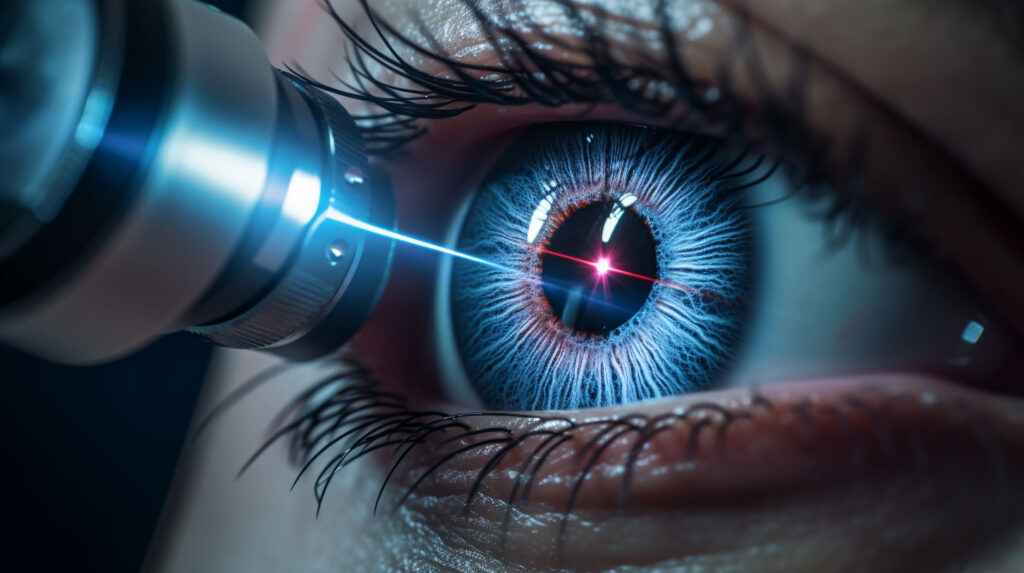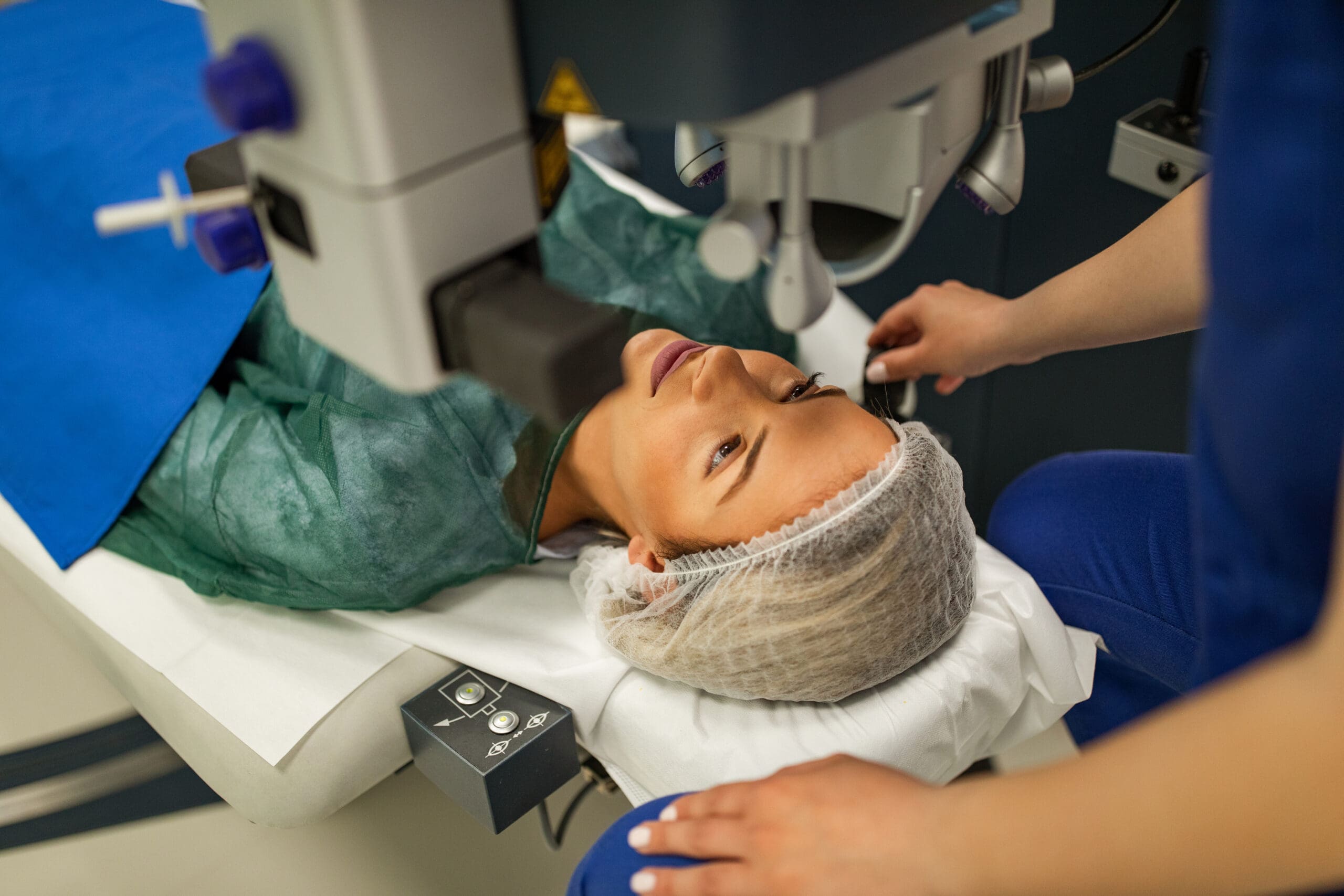Eye surgery has come a long way in transforming the lives of millions of individuals around the world, and one such revolutionary procedure is LASIK. This advanced technology has paved the way for enhancing vision and freeing people from the shackles of glasses and contact lenses. In this article, we will explore the fascinating world of LASIK surgery, its science, procedure, benefits, and potential risks. We will also address common concerns and debunk myths surrounding this life-changing procedure.
Understanding LASIK: A Brief Overview
LASIK, which stands for Laser-Assisted In Situ Keratomileusis, is a refractive eye surgery aimed at correcting nearsightedness, farsightedness, and astigmatism. The procedure involves reshaping the cornea – the clear front part of the eye – to improve how light enters the eye, thus ensuring clearer vision.
When considering LASIK eye surgery, it’s important to weigh the advantages and disadvantages carefully. While the benefits can be life-changing, it’s crucial to be aware of the potential risks involved in the procedure. By educating yourself about both aspects, you can make a well-informed decision about whether LASIK is the right choice for your vision correction needs.
Individuals considering LASIK often wonder about the safety and effectiveness of the procedure. It is important to note that LASIK has been performed for over two decades and has a high success rate in improving vision. The advancements in technology and surgical techniques have made LASIK a popular choice for individuals seeking freedom from glasses or contact lenses.
The Science Behind LASIK
With its roots in the field of ophthalmology, LASIK combines the precision of computer-controlled lasers with the human touch of skilled surgeons. By using an excimer laser, the surgeon can precisely remove a thin layer of tissue from the cornea, reshaping its curvature to correct refractive errors. This allows light to be properly focused onto the retina, resulting in sharper vision.
The cornea plays a crucial role in focusing light that enters the eye, and any imperfections in its shape can lead to blurry vision. LASIK aims to address these imperfections, providing patients with clearer vision and reducing their dependence on corrective eyewear.

Who is a Suitable Candidate for LASIK?
Not everyone is an ideal candidate for LASIK surgery. Factors such as age, eye health, and overall health play a significant role in determining suitability. Generally, individuals with stable vision, healthy corneas, and a sufficient corneal thickness are more likely to benefit from LASIK. It is essential to undergo a comprehensive eye examination to determine if LASIK is the right choice for an individual.
During the evaluation process, the surgeon will assess various aspects of the patient’s eye health, including the thickness of the cornea, the size of the pupil, and the degree of refractive error. This thorough evaluation helps ensure that the patient is a suitable candidate for LASIK and that the procedure can be tailored to meet their specific needs and desired outcomes.
The LASIK Procedure: A Step-by-Step Guide
Now that we have a basic understanding of LASIK and its suitability, let’s delve into the step-by-step process of this life-transforming procedure.
Pre-Surgery Preparations
Prior to the surgery, the patient will undergo a thorough eye examination to assess their eye health and determine the precise correction required. This examination includes various tests such as measuring corneal thickness, evaluating tear film quality, and mapping the curvature of the cornea. These tests help the surgeon gather essential information to customize the LASIK procedure for each individual.
Once the examination is complete, the surgeon will explain the procedure in detail, addressing any concerns the patient may have. They will also provide pre-operative instructions, which are crucial to follow for a successful outcome. These instructions may include avoiding the use of contact lenses for a specific period before the surgery. Contact lenses can alter the shape of the cornea, and removing them allows the cornea to return to its natural shape, ensuring accurate measurements and precise correction during the LASIK procedure. Find more about measurements on http://media.acc.qcc.cuny.edu/faculty/volchok/Measurement_Volchok/Measurement_Volchok2.html
What Happens During the Surgery?
The LASIK procedure itself usually takes less than 30 minutes and is performed on an outpatient basis. On the day of the surgery, the patient arrives at the LASIK center and is made comfortable in a dedicated surgical suite. The surgeon and their team ensure that the patient is relaxed and informed about each step of the procedure.
After applying numbing eye drops to ensure the patient’s comfort, the surgeon creates a thin flap on the cornea using a microkeratome or femtosecond laser. The creation of the corneal flap is a delicate and precise process, as it determines the success of the procedure. The surgeon carefully positions the microkeratome or femtosecond laser and creates a flap with a thickness of approximately 100 to 180 microns, depending on the patient’s specific needs.
Once the flap is created, it is gently lifted, exposing the underlying corneal tissue. The excimer laser, a highly precise and controlled laser, is then used to reshape the cornea. The surgeon guides the laser over the cornea, removing microscopic amounts of tissue to achieve the desired correction. The laser pulses are so quick and precise that they do not generate heat, minimizing the risk of damage to the surrounding tissue.
After the cornea has been reshaped, the surgeon precisely repositions the corneal flap, ensuring proper alignment. The flap acts as a natural bandage, protecting the treated area and promoting faster healing. The surgeon ensures that the flap adheres securely to the underlying tissue, allowing the healing process to begin.
Post-Surgery Care and Recovery
Following LASIK surgery, patients are advised to rest and relax for a few hours. The eyes may feel slightly dry or irritated, but this is temporary and can be eased with prescribed eye drops. These eye drops help lubricate the eyes and promote healing. It is essential to avoid rubbing the eyes, as this can dislodge the corneal flap and hinder the healing process.
During the first few weeks of recovery, it is important to avoid strenuous activities that may strain the eyes. This includes activities such as swimming, contact sports, and heavy lifting. The surgeon will provide specific instructions on when it is safe to resume these activities based on the individual’s healing progress.
Regular follow-up visits will be scheduled to monitor progress and ensure the best possible outcome. These visits allow the surgeon to assess the healing process, check visual acuity, and address any concerns the patient may have. It is important to attend these follow-up visits as they play a crucial role in ensuring the long-term success of the LASIK procedure.
The Impact of Advanced Technology on LASIK
In recent years, technological advancements have propelled LASIK to new heights, enhancing its precision, safety, and patient satisfaction.
As technology continues to evolve, the field of LASIK has seen remarkable progress in enhancing not only the accuracy of the procedure but also the overall patient experience. The integration of cutting-edge tools and software has allowed for more customized and tailored treatments, addressing individual visual needs with unprecedented precision.
Innovations in LASIK Technology
The introduction of wavefront-guided technology has revolutionized the LASIK procedure. Wavefront-guided LASIK enables the custom mapping of the eye’s unique visual characteristics, leading to even more accurate and personalized treatment.
Furthermore, the advent of femtosecond lasers in LASIK surgery has significantly improved the precision of the corneal flap creation process. This bladeless technology offers a higher level of safety and predictability, reducing the risk of complications and enhancing post-operative visual outcomes. To learn more about bladeless technology click here.

How Technology Enhances Precision and Safety
With the integration of sophisticated tracking systems and eye-tracking devices, LASIK surgery has become increasingly safer and highly precise. These technologies ensure that the laser tracks the eye’s movements in real-time, further improving treatment outcomes and reducing the risk of complications.
Moreover, the utilization of advanced diagnostic tools such as optical coherence tomography (OCT) has allowed surgeons to obtain detailed, three-dimensional images of the cornea, enabling a more comprehensive pre-operative assessment. This enhanced level of pre-surgical planning contributes to better surgical outcomes and higher patient satisfaction rates.
Benefits and Risks of LASIK Surgery
As with any medical procedure, LASIK surgery offers numerous benefits along with potential risks. It is essential to have a comprehensive understanding of both before making an informed decision.
The Pros of Opting for LASIK
One of the primary benefits of LASIK is quick visual recovery. Many patients experience significant improvements in their vision within a day or two after the surgery. Additionally, LASIK offers long-lasting results, freeing individuals from the reliance on glasses or contact lenses. Improved vision can enhance various aspects of life, such as sports performance and overall self-confidence.
Furthermore, LASIK is known for its high success rate in correcting refractive errors such as nearsightedness, farsightedness, and astigmatism. The procedure is quick and virtually painless, with most patients reporting minimal discomfort during and after the surgery. With advancements in technology, LASIK has become a popular choice for individuals looking to improve their vision and reduce their dependence on corrective eyewear.
Potential Complications and How to Mitigate Them
While LASIK is generally safe and effective, there are potential risks to consider. These may include dry eyes, glare, halos, or temporary visual disturbances. However, it is important to note that serious complications are rare. To mitigate these risks, it is crucial to choose an experienced surgeon, undergo a thorough pre-operative evaluation, and strictly follow post-operative care instructions.
By discussing any concerns or questions with your eye care provider and following all pre- and post-operative guidelines, you can minimize the likelihood of experiencing adverse effects from LASIK surgery. Understanding the potential complications and how to address them can help you feel more confident and prepared for the procedure, ultimately leading to a successful outcome and improved vision.
Frequently Asked Questions about LASIK
Now that we have explored the ins and outs of LASIK surgery, let’s address some commonly asked questions to provide a comprehensive understanding of this life-changing procedure.
Addressing Common Concerns about LASIK
Many individuals have concerns and questions regarding LASIK surgery. It is natural to seek answers before making a decision about your eyesight. In this section, we will address common concerns such as pain, recovery time, and the permanence of the results, to help alleviate any apprehensions you may have.
Debunking Myths about LASIK Surgery
Over the years, several myths and misconceptions have surrounded LASIK surgery. In this section, we will debunk these myths and provide accurate information to ensure you have a clear understanding of this life-transforming procedure.
In conclusion, LASIK surgery has revolutionized the field of eye surgery, providing a remarkable solution for individuals seeking improved vision. With its advanced technology and continuous innovations, LASIK offers precise, safe, and lasting results. By understanding the science behind LASIK, the step-by-step procedure, its benefits and potential risks, as well as addressing common concerns and debunking myths, individuals can make an informed decision about this life-changing procedure. So, if freedom from glasses or contact lenses is your goal, consult with a qualified ophthalmologist to determine if you are a suitable candidate for LASIK and embrace a future with clear and enhanced vision.
Read about cataract surgery on: Is Cataract Surgery Right for You

